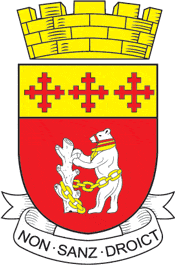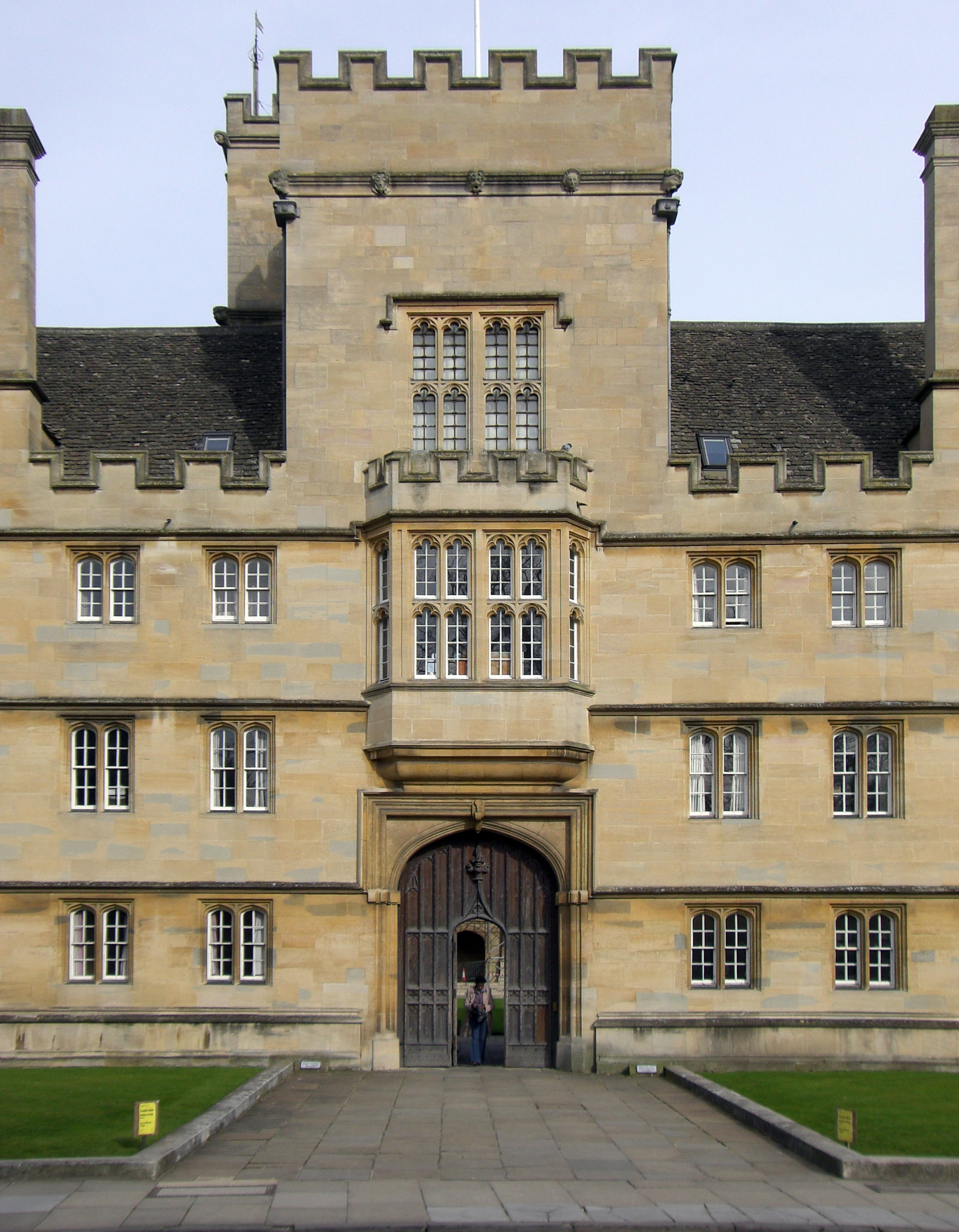|
Wroxall Abbey
Wroxall Abbey is a substantial Victorian mansion house situated at Wroxall, Warwickshire which was converted for use as a hotel, spa, wedding venue and conference centre. It is a Grade II listed building. History Built in 1141 by Sir Hugh de Hatton, the estate was occupied for some 400 years by Wroxall Priory, a Benedictine monastery of nuns, until the Dissolution of the Monasteries by Henry VIII in 1536. In 1544 the King granted the estate to Robert Burgoyne of Sutton, Bedfordshire(d 1545) who had been one of the King's Commissioners for the Dissolution. His son Robert (d 1613), High Sheriff of Warwickshire in 1597, built a manor house in Elizabethan style adjacent to the priory ruins. The Burgoyne family (later Burgoyne baronets) occupied the manor until 1713 when they sold it together with , to Sir Christopher Wren. Wren used the house as his country retreat, and it was occupied from time to time by members of his family, including his great-great-grandson Christopher ... [...More Info...] [...Related Items...] OR: [Wikipedia] [Google] [Baidu] |
Wroxell Manor
Wroxall Manor (also Warochesselle, Wrockeshal, Wroxhale) was a manor house on the Isle of Wight, situated in the Newchurch parish. History It was held before the Conquest by Countess Gytha (Gueda) of her husband Earl Godwin as a free manor, and at the time of the Domesday Book was in the king's hands, being one of the most valuable holdings in the Island. It belonged to the lords of the Island, and passed on the death of Isabel de Fortibus in 1293 to Edward I, who leased it in 1304–5 for life to Matthew son of John. Matthew died about 1308 and in 1309 the manor was granted by Edward II to Piers de Gaveston and his wife Margaret, the king's niece, on whom the lordship of the Island had been conferred, but in the same year they restored it to the king. The manor was evidently granted with the lordship of the Island to Edward, Earl of Chester, and was given in 1355 to the Princess Isabel for life. It remained a Crown possession until 1624, when James I granted it with Apse M ... [...More Info...] [...Related Items...] OR: [Wikipedia] [Google] [Baidu] |
Tudor Style Architecture
The Tudor architectural style is the final development of Medieval architecture in England and Wales, during the Tudor period (1485–1603) and even beyond, and also the tentative introduction of Renaissance architecture to Britain. It followed the Late Gothic Perpendicular style and, gradually, it evolved into an aesthetic more consistent with trends already in motion on the continent, evidenced by other nations already having the Northern Renaissance underway Italy, and especially France already well into its revolution in art, architecture, and thought. A subtype of Tudor architecture is Elizabethan architecture, from about 1560 to 1600, which has continuity with the subsequent Jacobean architecture in the early Stuart period. In the much more slow-moving styles of vernacular architecture, "Tudor" has become a designation for half-timbered buildings, although there are cruck and frame houses with half timbering that considerably predate 1485 and others well afte ... [...More Info...] [...Related Items...] OR: [Wikipedia] [Google] [Baidu] |
Grade II Listed Buildings In Warwickshire
Grade most commonly refers to: * Grade (education), a measurement of a student's performance * Grade, the number of the year a student has reached in a given educational stage * Grade (slope), the steepness of a slope Grade or grading may also refer to: Music * Grade (music), a formally assessed level of profiency in a musical instrument * Grade (band), punk rock band * Grades (producer), British electronic dance music producer and DJ Science and technology Biology and medicine * Grading (tumors), a measure of the aggressiveness of a tumor in medicine * The Grading of Recommendations Assessment, Development and Evaluation (GRADE) approach * Evolutionary grade, a paraphyletic group of organisms Geology * Graded bedding, a description of the variation in grain size through a bed in a sedimentary rock * Metamorphic grade, an indicatation of the degree of metamorphism of rocks * Ore grade, a measure that describes the concentration of a valuable natural material in the surrounding ... [...More Info...] [...Related Items...] OR: [Wikipedia] [Google] [Baidu] |
History Of Warwickshire
This is about the history of the county Warwickshire situated in the English Midlands. Historically, bounded to the north-west by Staffordshire, by Leicestershire to the north-east, Northamptonshire to the east, Worcestershire to the west, Oxfordshire to the south and Gloucestershire to the south-west. Areas historically part of Warwickshire include Coventry, Solihull, Sutton Coldfield and much of central Birmingham including Aston and Edgbaston. These became part of the metropolitan county of West Midlands (Sutton Coldfield becoming part of Birmingham) following local government re-organisation in 1974 after the passage of the Local Government Act 1972.HMSO. Local Government Act 1972. 1972 c.70 Much of northwestern Warwickshire, including that area now forming part of Coventry, Solihull and Birmingham, was covered by the ancient Forest of Arden which was still the case at the time of the Domesday Book but much of which was later cut down to provide fuel for industriali ... [...More Info...] [...Related Items...] OR: [Wikipedia] [Google] [Baidu] |
Country Houses In Warwickshire
A country is a distinct part of the world, such as a state, nation, or other political entity. It may be a sovereign state or make up one part of a larger state. For example, the country of Japan is an independent, sovereign state, while the country of Wales is a component of a multi-part sovereign state, the United Kingdom. A country may be a historically sovereign area (such as Korea), a currently sovereign territory with a unified government (such as Senegal), or a non-sovereign geographic region associated with certain distinct political, ethnic, or cultural characteristics (such as the Basque Country). The definition and usage of the word "country" is flexible and has changed over time. ''The Economist'' wrote in 2010 that "any attempt to find a clear definition of a country soon runs into a thicket of exceptions and anomalies." Most sovereign states, but not all countries, are members of the United Nations. The largest country by area is Russia, while the smallest i ... [...More Info...] [...Related Items...] OR: [Wikipedia] [Google] [Baidu] |
Grade II* Listed Building
In the United Kingdom, a listed building or listed structure is one that has been placed on one of the four statutory lists maintained by Historic England in England, Historic Environment Scotland in Scotland, in Wales, and the Northern Ireland Environment Agency in Northern Ireland. The term has also been used in the Republic of Ireland, where buildings are protected under the Planning and Development Act 2000. The statutory term in Ireland is "protected structure". A listed building may not be demolished, extended, or altered without special permission from the local planning authority, which typically consults the relevant central government agency, particularly for significant alterations to the more notable listed buildings. In England and Wales, a national amenity society must be notified of any work to a listed building which involves any element of demolition. Exemption from secular listed building control is provided for some buildings in current use for worship, ... [...More Info...] [...Related Items...] OR: [Wikipedia] [Google] [Baidu] |
Free Methodist Church
The Free Methodist Church (FMC) is a Methodist Christian denomination within the holiness movement, based in the United States. It is evangelical in nature and is Wesleyan–Arminian in theology. The Free Methodist Church has members in over 100 countries, with 68,356 members in the United States and 1,200,797 members worldwide. The ''Light & Life Magazine'' is their official publication. The Free Methodist Church World Ministries Center is in Indianapolis, Indiana. History The Free Methodist Church was organized at Pekin, New York, in 1860. The founders had been members of the Methodist Episcopal Church but were excluded from its membership for earnestly advocating what they saw as the doctrines and usages of authentic Wesleyan Methodism. Under the leadership of the Rev. Benjamin Titus (B. T.) Roberts, a graduate of Wesleyan University, the movement spread rapidly. Societies were organized, churches built, and the work established. Before the founding of the church, Roberts ... [...More Info...] [...Related Items...] OR: [Wikipedia] [Google] [Baidu] |
Grade I Listed Building
In the United Kingdom, a listed building or listed structure is one that has been placed on one of the four statutory lists maintained by Historic England in England, Historic Environment Scotland in Scotland, in Wales, and the Northern Ireland Environment Agency in Northern Ireland. The term has also been used in the Republic of Ireland, where buildings are protected under the Planning and Development Act 2000. The statutory term in Ireland is "protected structure". A listed building may not be demolished, extended, or altered without special permission from the local planning authority, which typically consults the relevant central government agency, particularly for significant alterations to the more notable listed buildings. In England and Wales, a national amenity society must be notified of any work to a listed building which involves any element of demolition. Exemption from secular listed building control is provided for some buildings in current use for worship, ... [...More Info...] [...Related Items...] OR: [Wikipedia] [Google] [Baidu] |
Wren's Cathedral
Wren's Cathedral, properly the Church of St Leonard and now a cathedral of the Communion of Evangelical Episcopal Churches, was originally the Lady Chapel of Wroxall Priory. Wroxall Priory was founded in 1141 as the Priory of St. Leonard for nuns at Wroxall, Warwickshire by Sir Hugh-Hatton, eldest son of the Earl of Warwick. He fought in the Crusades and was released after being held prisoner for seven years in Jerusalem and having a vision of St. Leonard, the patron saint of prisoners. He so appreciated the intervention of the saint that he gave 3,000 acres of land to the church in Wroxall to form a monastery for nuns after the Order of St. Benedict which was named the Priory of St. Leonard at Wroxall. A list of the Prioresses up to 1535 and further list of ministers from 1538 circa to the present can be found on the official website. A Charter issued by Pope Alexander III to the Priory of St. Leonard will also be found on the same web site. History With the separation of ... [...More Info...] [...Related Items...] OR: [Wikipedia] [Google] [Baidu] |
Victorian Gothic
Gothic Revival (also referred to as Victorian Gothic, neo-Gothic, or Gothick) is an architectural movement that began in the late 1740s in England. The movement gained momentum and expanded in the first half of the 19th century, as increasingly serious and learned admirers of the neo-Gothic styles sought to revive medieval Gothic architecture, intending to complement or even supersede the neoclassical styles prevalent at the time. Gothic Revival draws upon features of medieval examples, including decorative patterns, finials, lancet windows, and hood moulds. By the middle of the 19th century, Gothic had become the preeminent architectural style in the Western world, only to fall out of fashion in the 1880s and early 1890s. The Gothic Revival movement's roots are intertwined with philosophical movements associated with Catholicism and a re-awakening of high church or Anglo-Catholic belief concerned by the growth of religious nonconformism. Ultimately, the "Anglo-Catholicism" tra ... [...More Info...] [...Related Items...] OR: [Wikipedia] [Google] [Baidu] |
Sir Christopher Wren
Sir Christopher Wren PRS FRS (; – ) was one of the most highly acclaimed English architects in history, as well as an anatomist, astronomer, geometer, and mathematician-physicist. He was accorded responsibility for rebuilding 52 churches in the City of London after the Great Fire in 1666, including what is regarded as his masterpiece, St Paul's Cathedral, on Ludgate Hill, completed in 1710. The principal creative responsibility for a number of the churches is now more commonly attributed to others in his office, especially Nicholas Hawksmoor. Other notable buildings by Wren include the Royal Hospital Chelsea, the Old Royal Naval College, Greenwich, and the south front of Hampton Court Palace. Educated in Latin and Aristotelian physics at the University of Oxford, Wren was a founder of the Royal Society and served as its president from 1680 to 1682. His scientific work was highly regarded by Isaac Newton and Blaise Pascal. Life and works Wren was born in East Kno ... [...More Info...] [...Related Items...] OR: [Wikipedia] [Google] [Baidu] |
Burgoyne Baronets
There have been two baronetcies created for members of the Burgoyne family, one in the Baronetage of England and one in the Baronetage of the United Kingdom. Both creations are extinct. The Burgoyne Baronetcy, of Sutton in the County of Bedford, was created in the Baronetage of England on 15 July 1641 for John Burgoyne of Sutton, Bedfordshire, High Sheriff of Bedfordshire in 1640 and Member of Parliament for Warwickshire between 1645 and 1648. The Burgoyne family who descended from a Burgundian French soldier in the service of the English crown during the hundred years war, had acquired the two manors of Sutton in 1529 and 1544. Robert Burgoyne (d. 1545), the great-grandfather of the first Baronet, was one of the King's Commissioners for the Dissolution of the Monasteries and in 1544 he was granted the lands of the dissolved Priory of Wroxall by Henry VIII. The second Baronet sat as Member of Parliament for Bedfordshire in 1640 and between 1641 and 1648 and for Warwickshire be ... [...More Info...] [...Related Items...] OR: [Wikipedia] [Google] [Baidu] |







